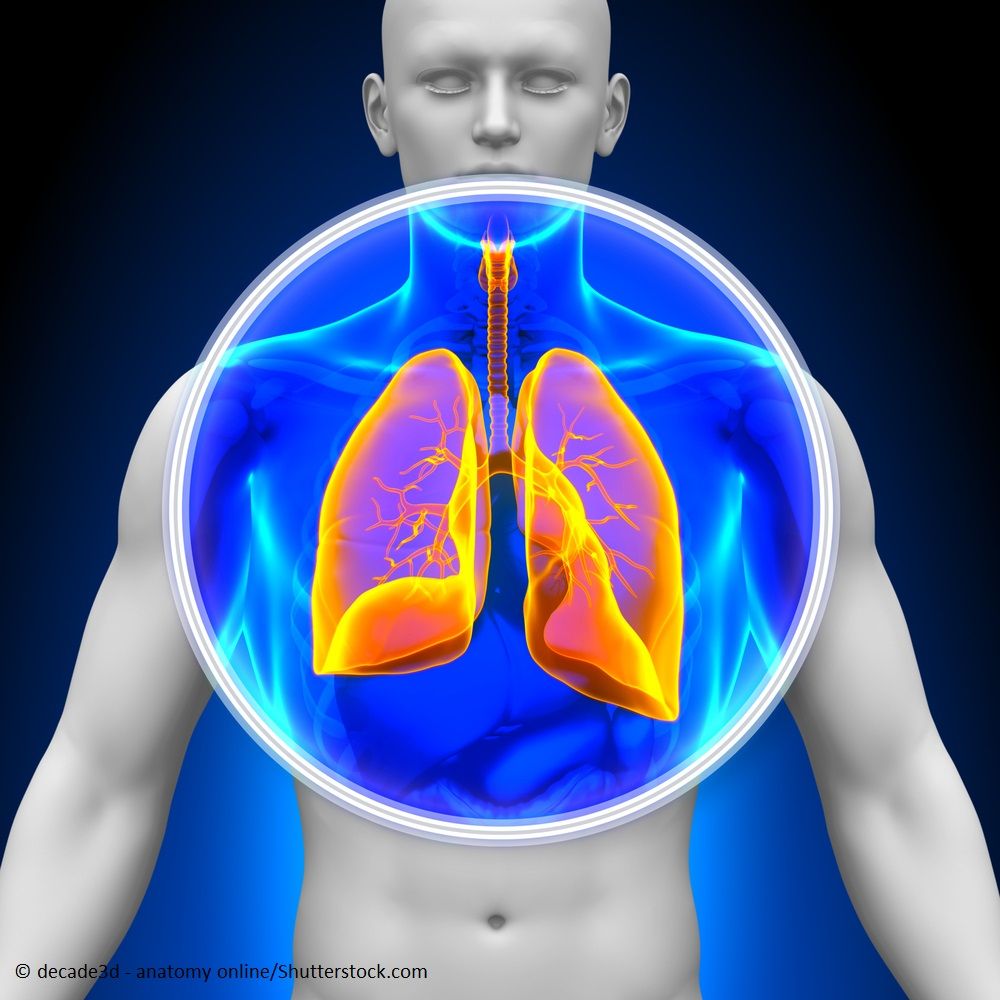A Better Way to Target Drug Delivery to the Lungs
This liquid instillation approach may lead to more effective treatment for a variety of lung diseases, including cystic fibrosis, COPD, bronchopneumonia, and lung cancer.
© decade3d - anatomy online/Shutterstock.com

A new method to target delivery of very small volumes of drugs into the lungs may one day provide much more effective treatment for a variety of lung diseases, according to a new study.
The approach uses micro-liters of liquid that contain a drug instilled into the lung and distributed as a thin film in the predetermined region of the lung airway, where it is absorbed locally.
“The ability to deliver drugs to specific sites in the lung could radically improve therapeutic outcomes of a variety of lung diseases, including cystic fibrosis, severe bronchopneumonia, chronic obstructive pulmonary disease, and lung cancer,” stated the researchers, led by senior author Gordana Vunjak-Novakovic, PhD, Professor of Biomedical Engineering and Professor of Medical Sciences (in Medicine) at Columbia Engineering and Columbia University Medical Center in New York.
They noted that “precise, localized delivery of exact doses of drugs to target regions” remains challenging with the use of conventional methods for pulmonary drug administration.
"We envision that our micro-volume liquid instillation approach will enable predictable drug concentrations at the target site, reducing the amount of drug required for effective disease treatment with significantly reduced side effects," said Dr Vunjak-Novakovic.
By studying liquid plugs in simple glass tubes, the research team developed a mathematical model that describes the liquid transport process in the lungs and programmed ventilation for delivery into a specific region of the lung. They described a more controlled delivery of soluble reagents, such as drugs, enzymes, and radionuclides, in microvolume liquid plugs to targeted branches of the pulmonary airway tree: upper airways, small airways (bronchioles), or the most distal alveoli.
The model predictions were confirmed by demonstrating targeted liquid film deposition in ventilated lungs of rats with the use of 3 fluorescence imaging modalities.
The researchers noted that aerosolized drugs can be delivered to selected lung regions by inhalation. Also, liquid instillation has been used to provide lung surfactant to the entire lungs in premature infants that cannot produce enough surfactant to breathe normally.
The collaborative project at Columbia University includes 3 biomedical engineers, a lung transplant surgeon, and a pulmonologist.
In the next step, the researchers plan to demonstrate treatment of lung diseases, such as cystic fibrosis and airway infections, by delivering pulmonary drugs with the use of their liquid instillation approach.
“The experimental and modeling data suggest that instillation of microvolumes of liquid into a ventilated pulmonary airway could be an effective strategy to deliver exact doses of drugs to targeted pathologic regions of the lung, especially those inaccessible by bronchoscopy, to increase in situ efficacy of the drug and minimize systemic side effects,” the researchers stated.